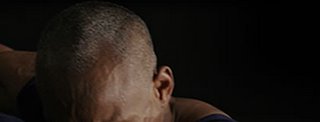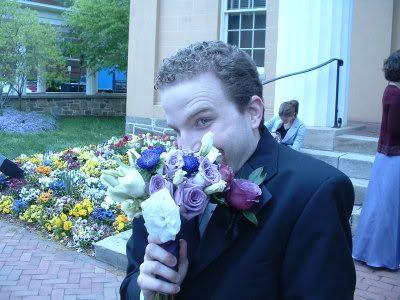
The performance we saw was a new work (which premiered two months ago) called "Blind Date". This new evening-length work is a multi-media extravaganza, with several screens showing slides of definitions, morphing faces, and videos of the dancers. Meanwhile there was an actor speaking much of the text from the slides. There were also spotlights being wheeled around, and huge yellow ducks. Yes, that's right...ducks.
First let me say that I think the title doesn't work. For awhile I thought I had a handle on it - was it about how on a blind date you reveal basic facets of who you are to a complete stranger? But that theme seemed to devolve quickly.
Other themes emerged and were much clearer. The piece is clearly (in part) a meditation on war, and the part that religion plays in it. It is also about identity, and how society perceives us. It's about sex, and how that is dissected by politics and the Bible.
But most of all I believe that it's a response to a sort of challenge Jones received from a friend. The friend said he wanted to see "more rage on the stage." So the work Jones has created is full of rage - chaotic, desperate, passionate.
Unfortunately this piece has too much chaos - there were many times where far too much was happening at once, and as an audience member you could barely focus on even one thing. The cacophony of sound, light and movement became numbing. I also think that this type of rage isn't realistic. To me, rage is clear, directional with a unified purpose.
Yet amidst all this chaos, the ten dancers were beautiful to watch. Jones' style is fluid, loose and risk-taking. Dancers flung themselves to the floor, flopped around in bridge poses, or marched in organized lines. They ran to each other to be held in lifts. And they supported each other when someone would make a trust fall. (There was also a performer who bore an uncanny resemblance to Sayid, minus the chest hair.)
So overall I did enjoy the performance, mostly because the dancing was so excellent. But I would prefer to see the company in another work that has more unity of vision.
UPDATE - the Washington Post review is pretty spot-on.

1 comment:
I liked it and disliked the performance for the same reason--total and utter chaos. But overall, I liked the parts better than the whole piece.
And I agree, the dancers were really good.
Post a Comment